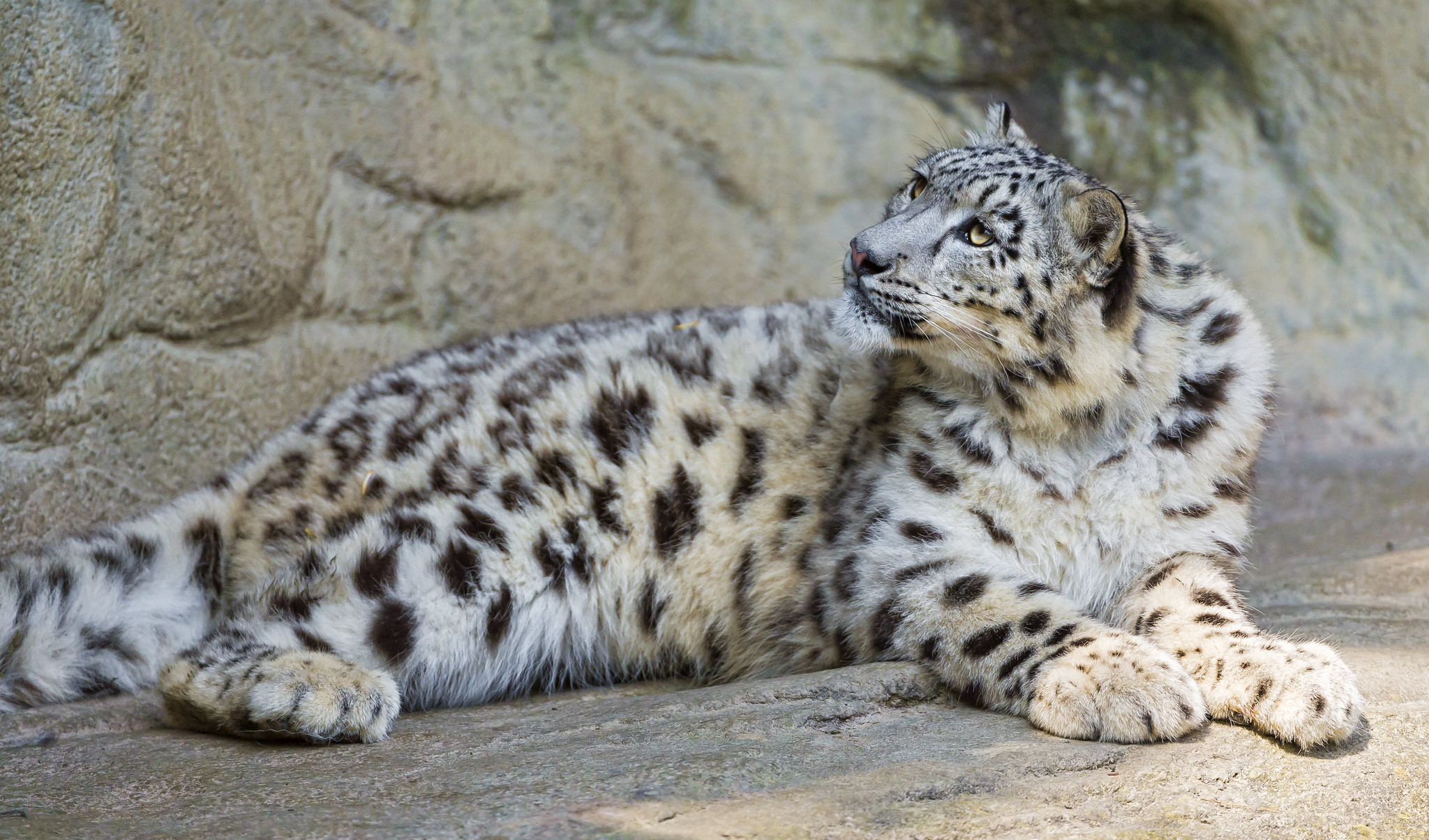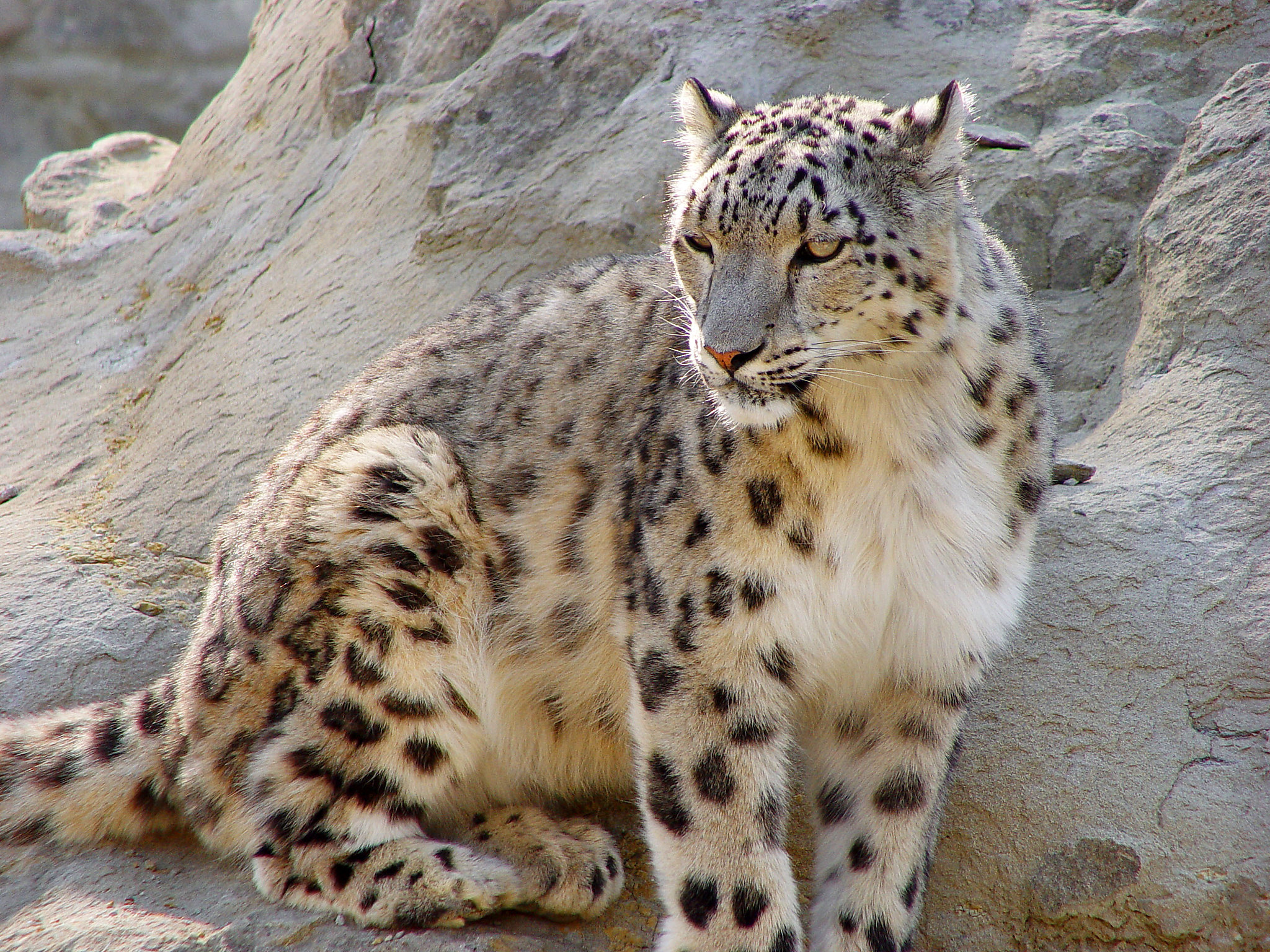10 Fun Facts About Snow Leopards
10 Fun Facts About Snow Leopards. Snow leopards are very shy big cats that live in the high mountains of Central Asia. They have a variety of traits and behaviors that help them live in harsh environments, such as cold weather, rough terrain, and harsh climate.

Here are 10 fun facts about snow leopards.
1. Snow leopards are more like tigers than leopards.
In spite of its name, the snow leopard is more closely related to the tiger than to this animal. Within the group Panthera, which also has tigers, lions, and jaguars, this animal fits in. Studies of genes have shown that about 3.9 million years ago, the ancestor that both snow leopards and tigers shared split from the family of big cats. About 3.2 million years ago, snow leopards split from tigers. People don’t agree on where the word Panthera came from, but they think it has something to do with “panther” or “hunting beast” in old Greek.
2. They live in the Central Asian mountains
Snow leopards live in mountainous places that are high up, usually between 9,800 and 14,800 feet (3,000 to 4,500 meters). They like rough, steep scenery like cliffs, ravines, and rocky outcroppings. About 2.2 million square miles (5,200,000 square kilometers) of 12 countries make up the snow leopard’s home area. These are Afghanistan, Bhutan, China, India, Kazakhstan, Kyrgyzstan, Mongolia, Nepal, Pakistan, Russia, Tajikistan, and Uzbekistan. The exact number of snow leopards left in the wild is still unknown, but estimates put the number at between 3,500 and 7,000.
3. There are three different kinds of snow leopards.
There are at least three different types of snow leopards based on DNA findings. The northern area of Panthera uncia irbis (Northern group) includes parts of Mongolia and Russia. This is where the species is most common. Panthera uncia uncia, or the Western group, lives mostly in the western part of the range, in places like Nepal and India’s Himalayas. Panthera uncia uncioides, also known as the “Central group,” lives in the middle parts of Tibet and the mountains in central Asia. There may not be obvious differences in appearance between these groups, but there may be changes in body size, fur color and density, and facial markings.
4. Snow leopards are very good at staying hidden.
Snow leopards are so hard to find that people often call them “ghosts of the mountains.” It is very hard to see these cats where they live in the wild. Their dark rosettes and spots on their smoky-gray coat help them blend in with the rocky and snowy surroundings. This helps them stay away from danger and also makes them good hunters. Additionally, their light footfall allows them to move swiftly and silently in the mountains where they reside.
5. They can jump very high
They are one of the best jumpers in the animal world because they can jump six times the length of their body. The average snow leopard can jump up to 20 feet (6 meters) high and up to 50 feet (15 meters) wide. They need to be able to jump well to get around in their mountain home, which has steep and broken ground. They can do these jumps because their back legs are strong and their bodies are long and flexible. Their long, thick tails also help them balance and turn while they are in the air during these high jumps.
6. Snow leopards can handle cold weather well.
Their bodies have changed over time to be able to handle the harsh, cold weather that they live in at high elevations. They have small, rounded ears that keep heat in and a wide, short nose that warms cold air before it goes into their lungs. The fur on their wide, furry paws makes them work like natural snowshoes, spreading their weight out evenly and keeping them from sinking in. And finally, a snow leopard’s fur is thick and woolly, which keeps it warm in the bitter cold. When winter comes, it gets very thick. The back can be up to 2 inches long, and the belly can be huge 12 inches long.
7. They look for new opportunities to hunt.
Although snow leopards usually eat wild sheep and goats, they are flexible eaters that can catch a wide range of animals. They have been known to hunt hares, birds, and even mice when there aren’t any bigger animals around. This variety in their diet helps them stay alive in harsh settings where food is often scarce. There are also reports of snow leopards eating the dead bodies of other animals. Even though they are very strong, snow leopards can’t chase their prey over long distances and depend on surprise to kill them. When they catch their food, they might drag it to a safer place to eat.
8. Snow leopards can’t roar
Snow leopards can’t roar like most big cats can because their mouth and throat are structure-wise different. Instead, they make a variety of other sounds that aren’t as loud but are just as important for communication. Some of these sounds are humming, meowing, hissing, growling, and a strange sound called “chuffing,” which is used to say hello or when a mother cat is talking to her cubs. The mother and kids stay close to each other and mate with the help of this group of sounds.
9. Snow leopards usually stay alone
Adult snow leopards only get together for a short time to mate. Other than that, they live alone. Based on the amount of food available, they keep big territories that can be anywhere from 12 to 40 square miles (31 to 103 square kilometers) in size. These areas don’t share much with each other, which keeps fights to a minimum and makes breeding easier. Snow leopards use scent marks to let other snow leopards know they are there, if they are pregnant, and where their territory ends. This helps keep these cats from running into each other.
10. Snow Leopard cubs are very small but soft
Snow leopard cubs are very small when they are born. They only weigh about 11 to 25 ounces (312 to 709 grams), which is the same weight as a small teddy bear. The good news is that they have a thick fur coat that keeps them warm in cold places. Snow leopard babies are born blind, just like babies of most other cat species. They depend on their mother for all of their needs, like warmth and milk. By the seventh day, cubs are starting to open their eyes. They are weaned when they are about ten weeks old. During that time, they stay with their mother for up to 18 to 22 months and learn important survival skills like how to hunt. They spend a long time learning from their mothers, which makes sure that when they are on their own, they are ready to live in the harsh mountain environment.
Those are the 10 Fun Facts About Snow Leopards.
A Quick Look at Snow Leopards
- Panthera uncia is its scientific name.
- Snow Leopard is its common name.
- Size: Between 3 and 4.5 feet long (not counting the tail).
- 60 to 120 pounds
- In the wild, they live 15–18 years.
- Carnivore (mainly hunts wild sheep, goats, and other mountain ungulates for food)
- It lives in the alpine and subalpine areas of mountain ranges in Central and South Asia.
- Status of Conservation: Vulnerable


















